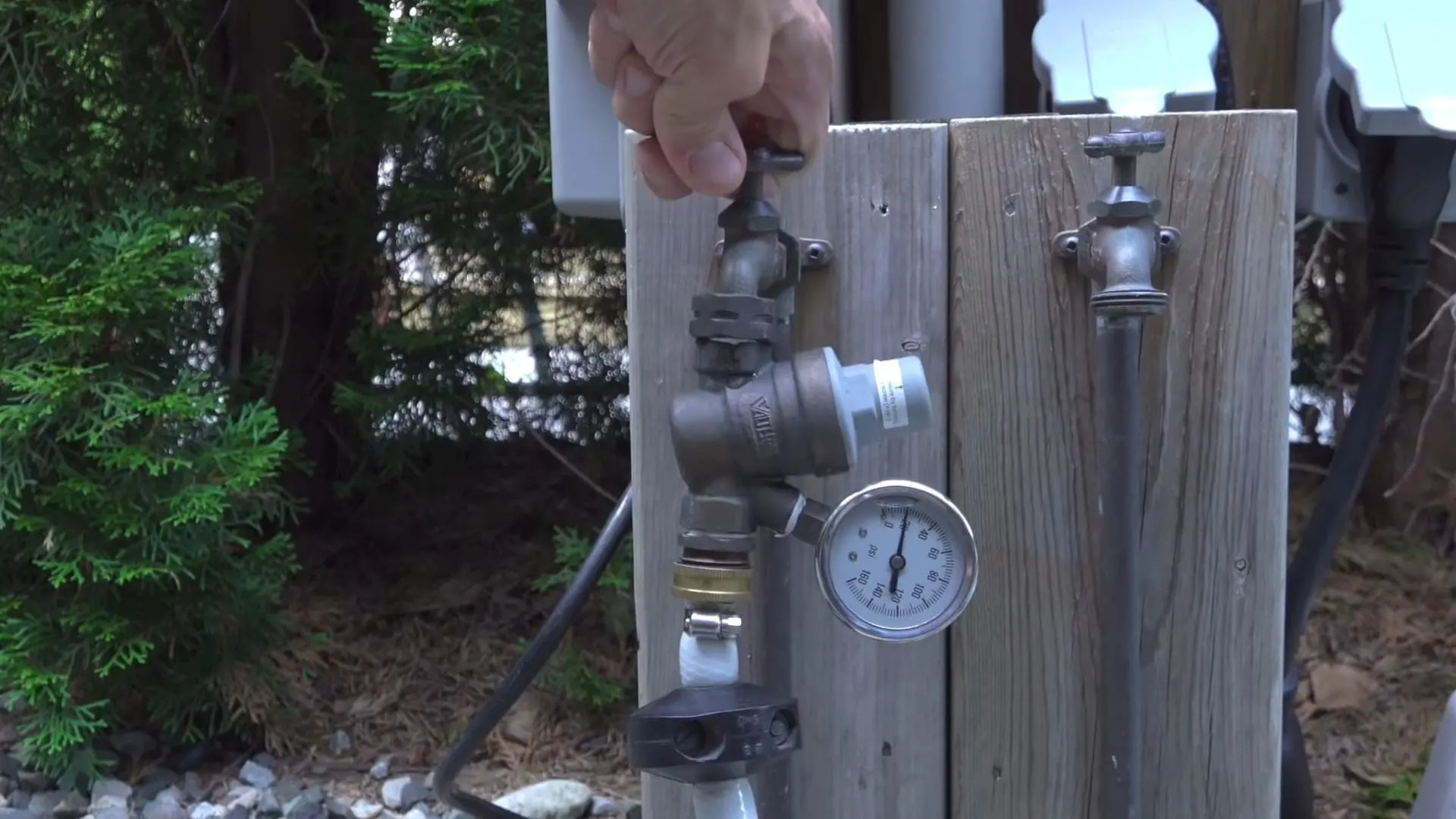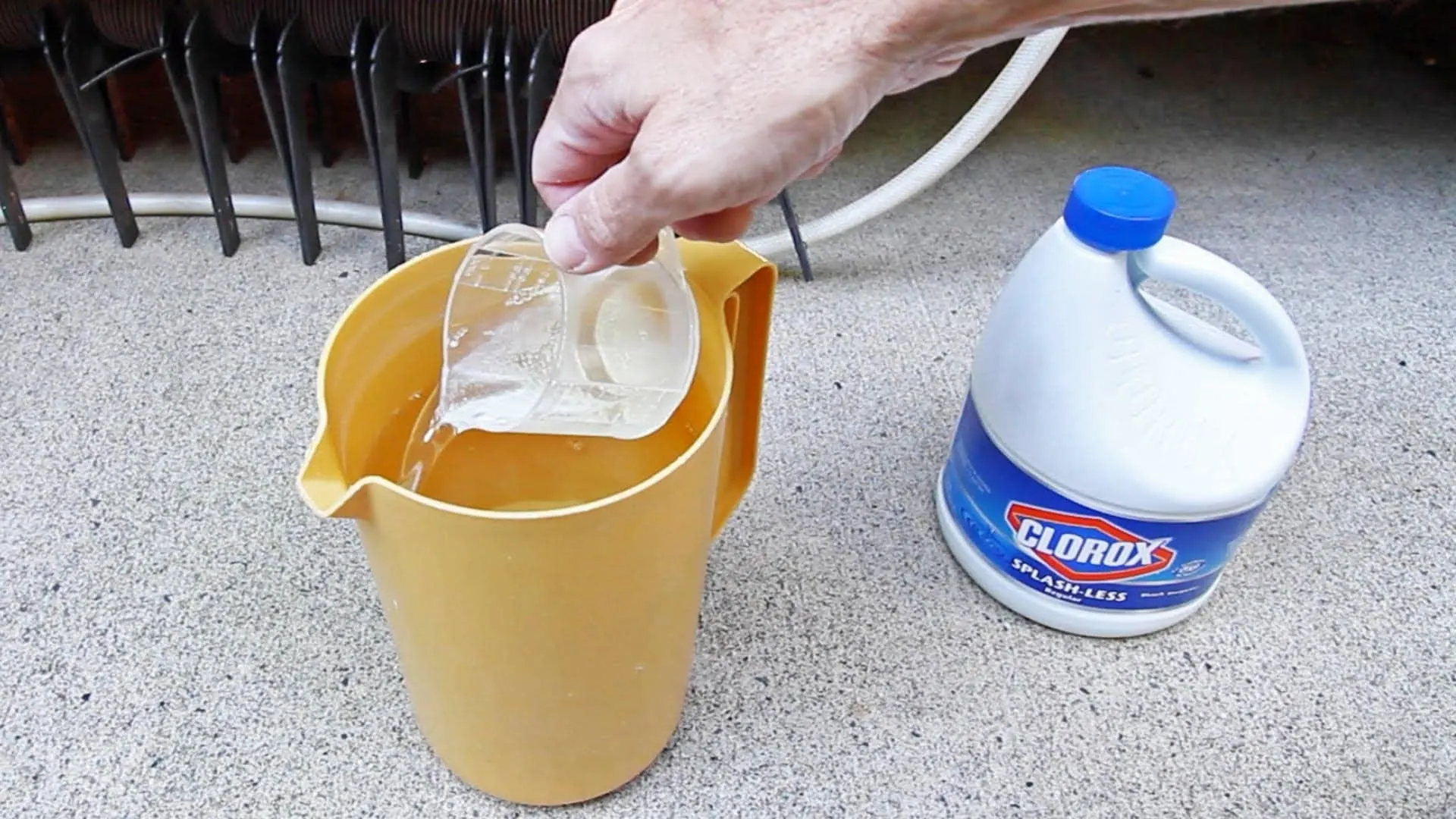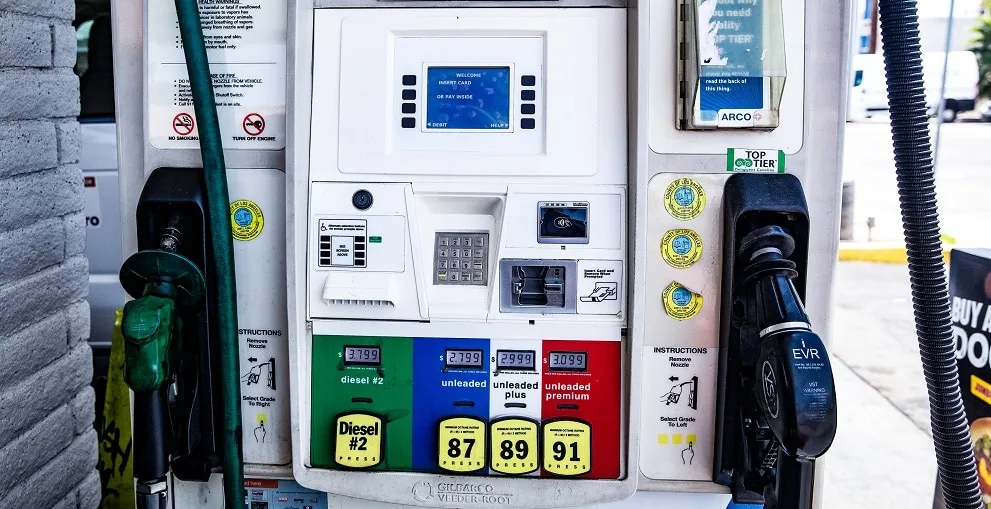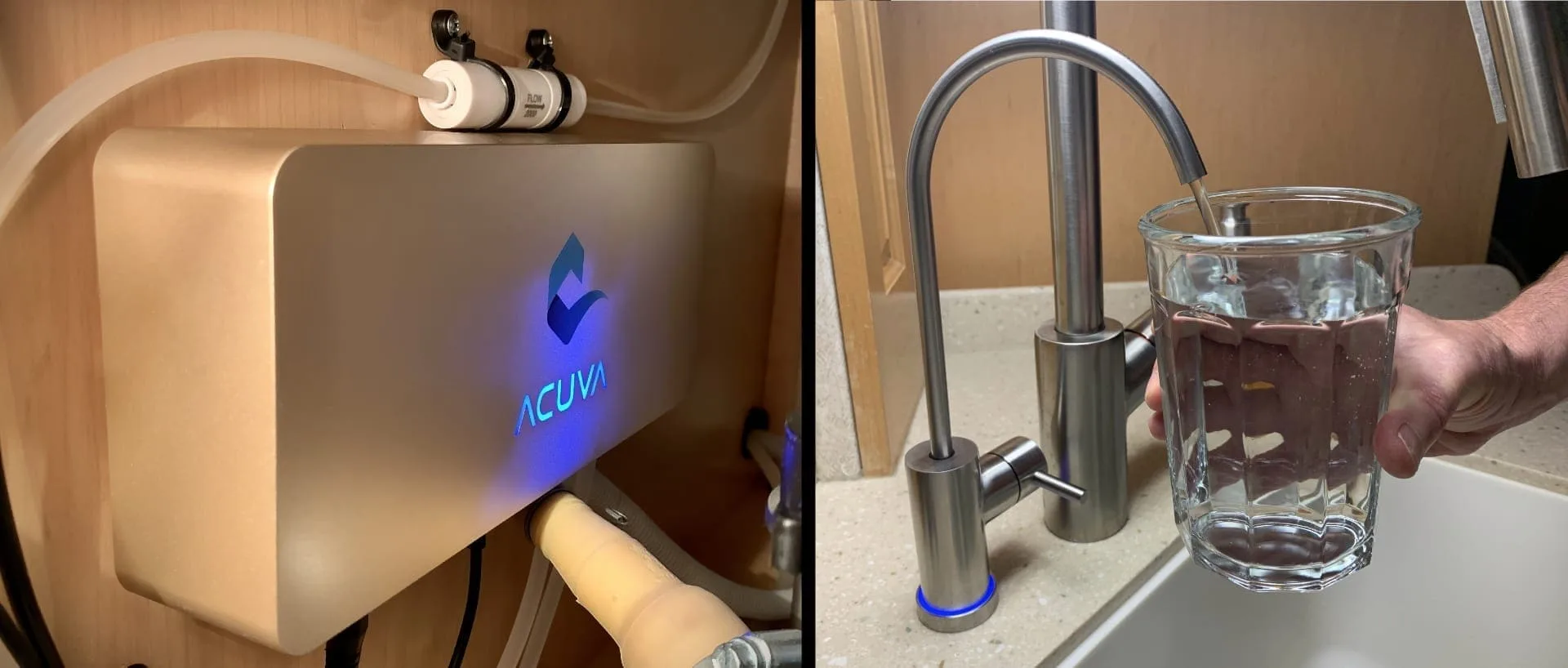RVs with holding tanks generally have three – the fresh water, gray water, and black water tanks. The gray water tank holds refuse from sinks and showers, the black water tank holds waste from your toilet(s). But in today’s post, we’re focusing on the tank of sustenance – the tank that allows us to hydrate, cook, wash, and flush even when we’re camped in the middle of the desert – the RV fresh water tank.
- 1) What is an RV Fresh Water Tank?
- 2) How Long Can Water Sit in an RV Fresh Water Tank?
- 3) Can I Leave My RV Fresh Water Tank Empty?
- 4) Can You Travel with a Full RV Fresh Water Tank?
- 5) How Can I Be Sure the Water from My RV Fresh Water Tank is Safe to Drink?
- 6) How Can I Extend My RV Fresh Water Tank for Boondocking?
- 7) Fresh Water is Everything
What is an RV Fresh Water Tank?
An RV fresh water tank is a holding tank that holds fresh water for an RVer’s use off the grid. Let’s talk about what this means, just briefly.
When an RV is connected to full hookups at an RV park or campground, one of their connections may be to a source of city water. This, along with a water pressure regulator, allows water to be fed into the RV’s plumbing system for use at all taps (sinks and showers) and the toilet, for all intents and purposes making your RV just like a sticks-and-bricks house with a continuous supply of fresh water.

When an RV is connected to full hookups at a campground or RV park, a potable water hose is connected to the city water source to provide water to the plumbing system of the RV.
However, when you’re off the grid – whether you’re on the road traveling or you’re boondocking or dry camping – you still need a source of water. The RV fresh water tank is that source.
Using a potable water hose, water is fed into the tank for holding & transporting. Your RV’s plumbing system includes a 12V water pump which is responsible for delivering that fresh water from the tank to your sinks, showers, and toilet.
How Long Can Water Sit in an RV Fresh Water Tank?
Funny you should ask. Two weeks is generally the simple answer, but we published an entire post answering this question, and you may want to check it out for further information.
Many RV dealers and marinas will tell you that freshwater tanks should be emptied after each trip. It’s not a bad policy to maintain, especially if you won’t be using your rig for a while.
In short, it really depends on how frequently you use your RV and how well you clean your tank on a regular basis. If you maintain your tank well by keeping it clean, you have a far lower risk of mold, algae, and bacteria developing.

Regularly sanitizing an RV’s fresh water tank is imperative so that bacteria, mold, and other undesirables are unable to fester.
Regularly sanitizing your fresh water tank and using a high-quality water filter will mean water in your fresh water tank stays cleaner for longer.
If you park your rig for months, however, you’ll want to empty the system of the old water, refill and sanitize the tank well, empty and refill with fresh water from a source you trust, and use a good filter.
Can I Leave My RV Fresh Water Tank Empty?
You can and, in some circumstances, you absolutely should. When you store your rig for a stretch of time, an empty (or near empty) tank is best. When you winterize your rig, you’ll also empty your fresh water tank in order to avoid it freezing and causing a problem with your tank.
Remember that an RV fresh water tank is vented. Hot weather, for example, can cause some undesirable scientific experiments to grow in your tank. Since this tank is used for fresh water with which you’ll bathe, wash, cook, and drink, you don’t want anything growing. That’s the reason for the regular sanitizing.
But, there’s nothing wrong with an empty fresh water tank. Just remember to sanitize it the first time you fill it back up. Sanitize well, and then refill with water from a known source if possible.
Can You Travel with a Full RV Fresh Water Tank?
You absolutely can travel with a full RV fresh water tank. But it depends on how far you’re traveling (you may not want to do that simply because the added weight does impact fuel consumption) and your RV’s weight-carrying capacity.

If you carry a full tank of fresh water as you drive, your fuel consumption will be lower due to the weight of the water.
Remember that every gallon of water weighs 8.34 pounds. If you’ve got a 100-gallon fresh water tank, that’s 834 pounds of added weight you’re hauling.
A better practice might be to travel with some water in your fresh water tank – enough to drink, cook with, and wash with along your road trip – and then as you get close to the area where you’ll be camping, fill that fresh water tank right up so that you’ll have all the water you need for camping off the grid.
And obviously, if you’re traveling to an RV park or campground where you’ll be hooked up to a city water service, you only need to carry as much water as you’ll need on the road, and then hook up once you’ve arrived at your campsite. Before leaving the site at the end of your stay, fill your fresh water tank with as much water as you’ll need to carry to your next destination.
How Can I Be Sure the Water from My RV Fresh Water Tank is Safe to Drink?
Again, we direct you to our post on how to sanitize your RV’s fresh water system – that’s one sure-fire way to keep the water in your fresh water tank fresh and safe to drink.
Having said that, there are a couple of other things that can help in varying degrees. The first is to place a water filter inline when filling your fresh water tank (after you’ve sanitized it!). There are many options that are bot inexpensive and relatively reliable.
Here’s our post all about how water filters work, and the various options available to you.
IMPORTANT NOTE: Many of the commonly-available water filters that are designed to be used in line with your drinking-water-safe hose (like this Camco TastePur filter) contain carbon that’s designed to remove chlorine from the incoming water supply. That’s both a boon and a bane… removing the chlorine improves the taste of the water (and minimizes the drying effect it can have on your hair and skin), but that also means you’re removing the component that was intentionally added to the water to keep it safe to drink.
And that includes while it’s stored in your RV’s fresh water tank. Using any filter that removes the chlorine from the water you’re filling your tank with means you’re leaving yourself more vulnerable to the growth of potentially harmful bacteria & algae. This is why we recommend only using a sediment filter when filling your tank so that the chlorine will continue to prevent harmful growth while it’s stored.
So, instead of the “bullet” style inline cartridge, we recommend assembling these components:
Then, use secondary filters at the point(s) of use to remove chlorine before using/consuming it. Undercounter filters with a countertop spigot for drinking water (like Acuva UV Purification system that we use comes with), and an inline shower head chlorine filter to prevent dry hair/skin from showering.
Or, if you have no choice but to fill your RV’s fresh water tank with water that’s had the chlorine removed, be sure to sanitize your RV water system more regularly in order to keep anything “nasty” from growing there.
If you really want to make sure the water from your fresh water tank is safe to drink, we’d suggest looking into the system we’ve relied on for years now, and that is our Acuva water purification system. In addition to an inline filter for removing chlorine and other harmful chemicals, this system uses ultraviolet light to purify the water that filters through it. The technology is highly effective and unmatched in the industry.

Having an Acuva water purification system gives us safe, fresh water and peace of mind!
Acuva is a system we can vouch for with confidence, based on a significant amount of experience.
We welcome you to check out our post and video on our Acuva, detailing why we love and trust this system to keep our drinking water safe.
You can watch us install an Acuva system, step-by-step, and you can see the actual lab tests of river water we collected and ran through the Acuva system.
If you find yourself interested in installing an Acuva in your RV, here’s a coupon that will allow you to save some cash:
Ditch the bottled water! Major cities sanitize their drinking water using ultraviolet light, and now you can, too. Acuva’s UV-LED system makes water safe to drink, using a fraction of the space...Show More
Ditch the bottled water! Major cities sanitize their drinking water using ultraviolet light, and now you can, too. Acuva’s UV-LED system makes water safe to drink, using a fraction of the space and power… perfect for RVs.
Check out our Acuva installation video here
Get 10% off any Acuva system when shopping online at Acuva's website and using the discount code listed here.
Show LessHow Can I Extend My RV Fresh Water Tank for Boondocking?
There are a number of ways to carry additional water with you for an extended boondocking trip. Our post on RV water bladders should be helpful in explaining what these are and how they work.
Your available space and cargo-carrying capacity will determine which size and type of water bladder would work best for you.
If you’re in a small camper van, for example, you might opt for small collapsible containers like these:
- FOOD-GRADE ODORLESS GREAT TASTE: PE plastic made with highest quality USA raw material. Environmentally friendly non-toxic, No BPA PVC or DEHP, No...
- LIGHT, COMPACT, PORTABLE AND REUSABLE Foldable space saving design store away easily. Remains soft and flexible even when cold yet retains shape and...
However, if you’ve got a pickup truck with a relatively empty bed hauling your travel trailer, you might have room for a very sizable bladder that can give you anywhere from 15 to 150 gallons of additional water. (Just keep in mind the additional weight you’ll be carrying as mentioned previously, and fill the bladder as close to your boondocking destination as possible.)
- THE BEST THING SINCE SLICED BREAD FOR THE RV OWNER" Sick and tired of stretching hoses while you're out boondocking? Don't go dry camping without...
- DECEPTIVELY TOUGH!" Our AQUATANK-2 systems have state-of-the-art material that is thinner and lighter than any rubber bladder but much stronger than...
And extending fresh water isn’t the only thing you may need to contend with when extending your dry camping stay. Black and gray water will also need to be dealt with… and one of the best ways is to use a portable dump tank (also known as a “Blue Boy”). Check out our recommendations for the 3 Best Portable RV Dump Tanks!
Fresh Water is Everything
The importance of fresh water when camping can’t be overstated. Staying hydrated is critical, and the ability to use water to cook and wash is highly desirable.
Your fresh water tank is an important part of your RV and one that should be cared for as well as possible toward your good health and the conveniences you’ll enjoy as you dry camp in the middle of just about anywhere, off the grid.
Geek Out with Us Every Week
Join our newsletter to learn about all things RV-related. Every week we offer free tips, tricks, product reviews, and more to our online community of RVers. So, whether this is your first time on the road or you’re a seasoned expert, we’d love for you to geek out with us!





Brenda hall
Wednesday 25th of October 2023
I found the tall t valves that drain through the floor. however, I cannot lift them or push them down. when I twist them nothing happens. how do I get this valve to open so the fresh water tank will drain? tall skinny valves with a t on the top.
Steve
Friday 14th of April 2023
I can tell you from experience if you don't sanitize your fresh water tank you can get very sick!
TheRVgeeks
Wednesday 25th of October 2023
Uggh! 🤢 Sorry to hear you have first hand experience with that, Steve!
robert viens
Wednesday 1st of June 2022
I forgot to mention that there is only an over flow and a fill line going into the tank.
TheRVgeeks
Sunday 5th of June 2022
Hmmm... are you sure there's not also a line going OUT (i.e. to the water pump)? If not, trace that "fill line" and see where it goes... it must "T" somewhere so that it acts as a tank fill AND and outlet to supply fresh water to the water pump.
robert viens
Wednesday 1st of June 2022
I have a 2012 monaco. It has a 60 gallon fresh water tank and I have the Anderson Kantleak water system. If I filled my tank until it ran out the over flow it would create a siphon and drain 50% of the water. What would also happen is that the tank would collapse. I put a tee in the overflow line and attached 10 ft of tubing and just laid it on the top of the tank hoping it would act as a vent and it worked. the siphoning stopped within a minute and the tank remained full of water. But now I have not water pressure when I use the on board water pump. Did venting the tank cause this loss of pressure when using the pump?
TheRVgeeks
Sunday 5th of June 2022
Hi Robert. Siphoning from the overflow plumbing is a common issue for many RVers, and adding in a loop or a vacuum breaker into that line is the common solution. Can't imagine that adding anything like that would cause an issue with the water pump... we'd bet that, in getting the overflow line corrected, a valve somewhere else (like a winterizing valve) was changed while you were working and it didn't get set back correctly.
Rex
Sunday 23rd of January 2022
Question regarding my fresh water system: when connected to city water for several days with a full onboard tank I notice water overflowing from the cap of the tank. I open the tank inlet to drain off the excess water, however the issue returns in a couple of days. Any ideas regarding this problem? I use a pressure regulator and Camco in-line filter. Thanks, really enjoy your tips.
TheRVgeeks
Sunday 23rd of January 2022
Hi Rex. So are you saying that while connected to city water with a full fresh water tank, your fresh water tank begins to overflow? Os is the "overflowing water" coming from somewhere else? If your RV is like ours, where you have a single city water connection and a valve to direct the city water either to fill the fresh tank or to pressurize the onboard water lines, it's possible that valve (or another valve or backflow preventer somewhere in your water system) is failing and allowing water to continue filling the tank, ever so slowly. May take a bit of detective work to track down the culprit.